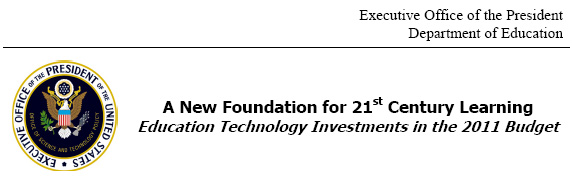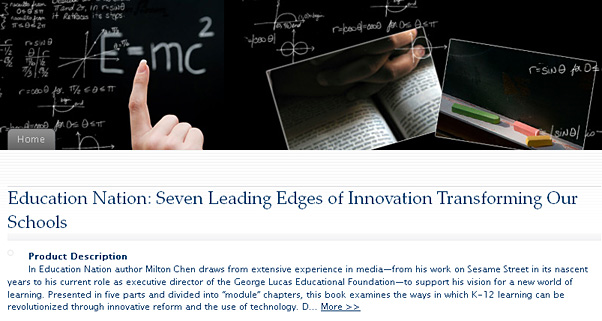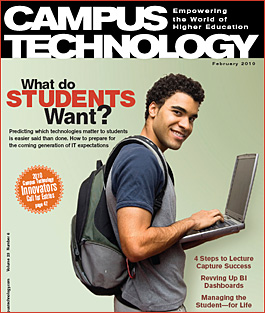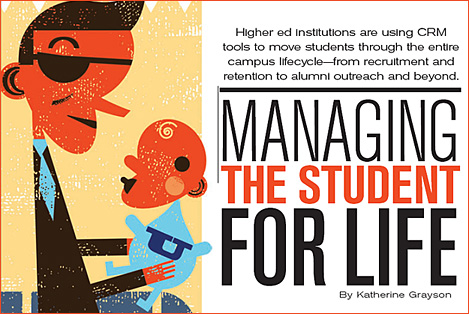New hybrid PhD program at MSU — from Michigan State University
From Dr. Patrick Dickson of MSU College of Education:
I would like to let you know of the new hybrid avenue to earning the Michigan State University Ph.D. in Educational Psychology and Educational Technology with an emphasis in educational technology and online learning.
The faculty decided to offer this substantially online pathway to our PhD in response to the interest among professionals who wish to continue in their current positions while earning their doctorate.
The hybrid program is designed for the bright, established professionals currently serving in K-12 schools, universities, policy centers, and research institutions, who understand how new technologies, including online learning, continue to transform education.
3 educational web applications I’d like to make — from edte.ch blog
“I am sure you have had moments when you discover your inner inventor too. Here are three web based applications I have much pondered and if I had more time, money, expertise would probably have made by now.”
- StoryBook Earth
- My Reading Diary
- Connect Collaborate Content
HP, in collaboration with the International Society for Technology in Education (ISTE), invites educators around the world to participate remotely in the 2010 HP Innovations in Education Worldwide Summit. More than 100 educators in 23 countries will be attending the summit in person on 22-24 February to learn from education experts and innovation thought leaders such as Michael Horn (co-author of “Disrupting Class”), Georges Haddad (UNESCO), Phil McKinney (HP Innovation “guru” www.philmckinney.com), David Williamson Schaffer (www.epistemicgames.org), and students as they discuss how social media impacts their learning experience.
Bruce Klein [SVP for Cisco] Talks About Technology Creating New Business and Learning Models in Higher Education — from focuswashington.com
Technology is playing an increasing role creating new business and learning models in higher education. Bruce Klein, senior vice president for Cisco, provides us with a snapshot on how technology is becoming a strategic tool in not just providing a better experience for teachers, students, and other stakeholders, but also how video is transforming the way students learn and how schools are building brand reputation and increasing competitiveness globally. As an example, Bruce Klein talks about Duke University’s adoption of high-resolution video with Cisco TelePresence and builds a next-generation classroom environment, as well as Purdue University’s new way to deliver student interaction.
How well has your institution integrated technology? — from Tony Bates
Putting Emerging Technologies to the Test — from CampusTechnology.com by Bridget McCrea
Hope College, a liberal arts institution in Michigan, isn’t afraid to put technology in the classroom and to get faculty involved in the process
To encourage innovation and participation among its faculty, Hope College established its own “Instructional Technology Innovation Fund (emphasis DSC)” in 1999, with the goal of enticing instructors to propose ideas and to get them funded. “Faculty members make a public presentation about their ideas before they can get the financing for them,” said Ludwig. “This has turned out to be an incubator for dozens of exciting, individual faculty projects.”
One of those projects garnered attention from the Fund for the Improvement of Postsecondary Education (FIPSE), which, according to the FIPSE Web site, “supports and disseminates innovative reform projects that promise to be models for improving the quality of postsecondary education and increasing student access.”
RENCI pioneering the visualization industry with innovative interfaces — from InnovativeInteractivity.com by Tracy Boyer
“Today I flew through a digitally enhanced simulation of an ear canal, looked at 3D manipulations of static 2D images, and watched a seamless video projected simultaneously on four surrounding walls. The Renaissance Computing Institute (RENCI) is based in North Carolina and oddly enough it was my first visit to this extremely innovative and eye-opening interactive institute. Not only did it get me excited about information visualization, it gave me tons of inspiration for the future of immersive and interactive multimedia. Here is a great overview video of a similar tour group that went through RENCI. I experienced the first two visualizations that are shown here…”
















